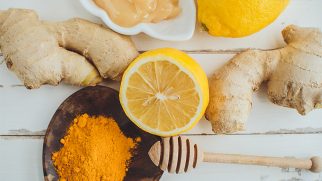
Diabetes is one of the three most common chronic diseases in the U.S., according to the American Diabetes Association (ADA), and it’s on the rise. Some 30 million people, 9.4% of the U.S. population, have been diagnosed with diabetes, type 1 or type 2. In addition, an estimated 7.2 million people have the disease but don’t know it yet, and 84.1 million people have been diagnosed with pre-diabetes.
Another way to look at it is that one out of 11 people in the U.S. has diabetes. That’s staggering.
The cost of treating diabetes is significant. A 2012 study in the American Journal of Preventive Medicine estimates the cost per individual with diabetes ranges from $55,000 to $130,000 over a person’s lifetime. In the United States, much of that cost is passed on to employers that provide healthcare coverage.
Many people with diabetes require medicine to manage their disease, however there’s increasing evidence that diet can play a major role in treatment and prevention. The right diet can help prevent the disease, and even reverse early-onset diabetes.
Helping your employees eat healthier can reduce diabetes-related costs for you and your employees. Here is what the latest research says about controlling diabetes through diet.
Grapes, Blueberries and Apples
Eating more whole fruits, particularly grapes, blueberries, and apples, was associated with a lower risk of type 2 diabetes, according to a Harvard study published in the British Medical Journal in 2013. Eating certain fruits twice a week reduced the risk for developing type 2 diabetes by 23% compared to those who ate one fruit serving a month. Fruit juice, on the other hand, does not have the same benefit.
Each of these three fruits have specific benefits that make them more effective at fighting diabetes. Grapes not only have fiber, but they contain resveratrol, a phytochemical that modulates the blood glucose response by effecting how the body secretes and uses insulin.
Blueberries may improve sensitivity to insulin due to high levels of naturally occurring antioxidants called phytochemicals. They may also reduce the risk of heart disease, according to a University of Michigan Cardiovascular Center study.
Apples contain a good deal of fructose, but when consumed as a whole fruit the fiber in apples slows down the digestion and absorption of sugar. This means sugar enters the bloodstream slowly and doesn’t rapidly raise blood sugar levels. Apples also have polyphenols, plant compounds that slow down the digestion of carbohydrates and help lower blood sugar.
Cinnamon
Cinnamon contains a compound called hydroxychalcone, which appears to stimulate insulin receptors on cells, improving the body’s ability to absorb sugar. University of California–Davis researchers, who reviewed eight cinnamon studies, reported that about half to one teaspoon a day lowered fasting blood sugar levels in diabetics by an average of nine points.
Steel-Cut Oats
Steel-cut oats and even rolled oats are high in soluble fiber, which helps slow the release of glucose into the bloodstream and prevent spikes in blood sugar. Studies show that eating oats and other fiber-rich foods for breakfast appears to help keep blood glucose under control throughout the day.
Olive Oil
Olive oil is rich in monounsaturated fats (MUFAs), which may improve insulin sensitivity. A Spanish study found that people who ate plenty of these good fats at breakfast had better insulin sensitivity throughout the day than those whose morning meal was rich in saturated fat or carbohydrates. MUFAs may also reduce belly fat, which can contribute to inflammation and increase type 2 diabetes.
Olive oil is high in antioxidants, which can help diminish the damage caused by high levels of sugar in the blood. It is an anti-inflammatory food, and inflammation is behind many chronic diseases. Using olive oil can reduce inflammation and damage that long-term inflammation can inflict. The primary substance in olive oil that acts as an anti-inflammatory agent is oleocanthal, which acts on the COX enzyme system in a way similar to nonsteroidal anti-inflammatory drugs like ibuprofen.
Beans
Legumes provide a combination of high-quality carbohydrates, lean protein, and soluble fiber that helps stabilize blood sugar levels and keeps hunger in check. A 2012 University of Toronto study found that type 2 diabetes patients who ate more legumes had improved blood sugar control and reduced their risk of heart disease.
Kale, Broccoli and Spinach
Dark leafy vegetables like kale, broccoli, and spinach are low-glycemic foods and sources of calcium. In addition, a compound found naturally in broccoli and other cruciferous vegetables may reduce some of the harmful effects of type 2 diabetes in overweight adults, according to researchers at the Johns Hopkins University School of Medicine.
Diet matters, especially when managing diabetes. Given the millions of people with the disease in the U.S., it’s likely you have employees who are either at risk for diabetes or already have been diagnosed. Equipping them with nutritional resources to eat healthier could reduce diabetes-related costs for you and your employees.
Zipongo is a digital nutrition platform that makes it simple to promote healthy eating habits. Learn more about how Zipongo works, or request a demo to see the platform in action.


